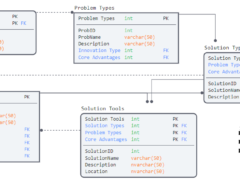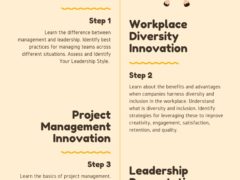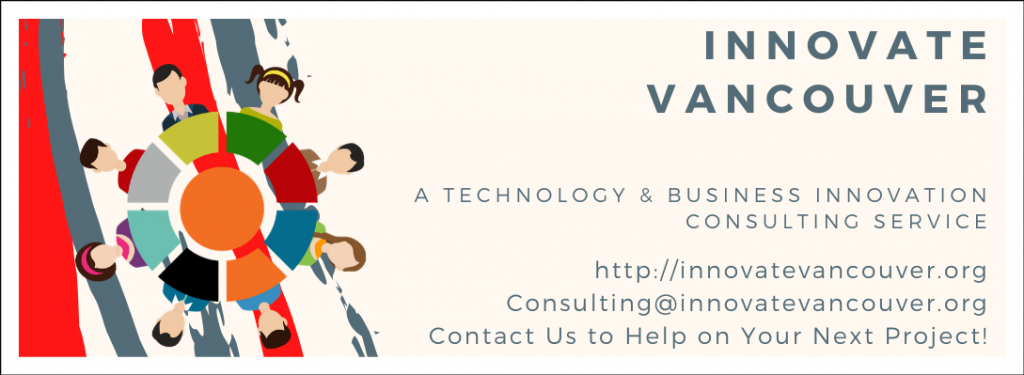Learning infrastructures represent a core competency and a competitive advantage for nonprofit innovation. The need for innovation is no less true in the nonprofit sector where the organization’s mission, vision, and values are only realized when specific experiences or outcomes are achieved. Unfortunately, planning and achievement of outcomes realized through the combined efforts of core competencies leveraged throughout the organization is often out of reach of the average nonprofit.
Consider the analogy of a train locomotive to represent one of the primary components of the organization’s value chain. The locomotive is responsible for setting the pace, direction, and structure for the rest of the components that follow. But what happens if the components following the locomotive are misaligned. Derailment!
Ask yourself the following questions to get a better understanding of how your organization may be performing with systemic change and organizational learning:
- Think of the last systemic change your organization implemented. How long ago was that? How did it perform? Were the intended outcomes reached? Are the results being maintained? Did the plan proceed generally as expected? Why or why not?
In my 20 years in the nonprofit and service industry I have worked for several different organizations but observed similar patterns. This remains true regardless the organization’s size, niche, or country of operations.
General themes observed include the following:
- Systemic misalignment is the norm, not the exception
- The skills needed to deliver consistent outcomes changes over time, and is not always available
- Microcosms often have greater pull than the larger system; and often have a great influence on the organization’s culture than the executive team.
- These points, in turn, influence the mission, vision, and values that are within reach of the organization’s efforts; there becomes a separation between espoused vs. held beliefs & values.
- Steps #1-5 often repeat themselves until the organization reaches a pivot point, and change becomes absolutely necessary. These changes are not always internally driven.

The CEO is responsible for providing pace, direction, and structure throughout the organization’s value chain. The challenge with organizational misalignment is that systemic outcomes are often un-realizable as silos and other factors mitigate cross functional learning, development of strategy, problem solving, and competency execution. Since nonprofits, and other service environments, are often both fluid and dynamic the need for a better approach to support competency development is needed. Otherwise what the organization achieves is left largely to chance.
Solutions to resolving these vulnerabilities include the following:
- Breaking down silos
- Requiring cross functional efforts & communication
- Formalizing values, guidelines, and protocols (artifacts)
- Iterative evaluation, training, learning, and change management based on outcomes
The challenge for many nonprofits is aligning the components with the locomotive when they are already in motion but running on different tracts, at different speeds, and in different directions. The process of systemic alignment across the organization is far simpler when represented at onset, and far more difficult to achieve (if possible at all) once the locomotion is already moving.
Solutions to resolving these vulnerabilities include the following:
- Development of formal cross functional roles & responsibilities (artifacts); individual & team based
- Formal communication and celebration of selected outcomes
- Formal planning and collaboration around outcomes to insure they are understood
- Evaluation, identification, and implementation of cross-functional and competency development training; emphasizing skills that are broad, agile, and reflective of the organization’s mission, vision, & values
Nonprofit cultures often include numerous artifacts, rituals, assumptions, beliefs, and values that determine what that culture is prepared to consider. These characteristics are often observed based on the symptoms that they produce, as an extension of their impact on the system. The challenge with most nonprofit training efforts is that they often focus only on addressing the symptoms observed, rather than look at the primary drivers that determine quality and performance. This approach is more often a ‘check the box’ method where passing tests, acquiring core competencies, building capacity, and generating organizational learning are misaligned. Organizational goals must be evaluated using metrics that evaluate the experience of all stakeholders, including the impact of the organization’s products or services on desired outcomes. For example, Staff feeling good about their work is not an outcome for the customer.
Solutions to resolving these vulnerabilities include the following:
- Begin all planning discussions with a review of the organization’s mission statement
- Identify the subsequent vision and values of the mission statement
- Identify the artifacts that should be observed when the outcomes are realized
- Identify how to evaluate and measure outcomes to verify realization
- Identify if there are outcomes desired for multiple stakeholders at the same time; this may occur, for example, when staff are delivering services. Prioritize.
One of the challenges in nonprofit organizations is the confusion that often exists between evaluating the organization’s values and the organization’s mission. Although these statements are aligned in the artifacts of the organization’s strategic planning documents – the values experienced by some stakeholders are often perceived as in conflict with the organization’s mission as understood by others. This is often because of misalignment between the two groups.
Solutions to resolving these vulnerabilities include the following:
- Identify when there is misalignment between desired outcomes, when multiple-stakeholder goals are identified for the same project; confirm where the conflict exists.
- Collaborate around the organization’s mission, vision, and values as it pertains to the conflict. Is this a conflict for the organization or just for the individual stakeholder?
- Identify where the misalignment starts? Is it with the organization or the individual?
- Confirm a protocol/process (artifacts) for seeking resolution on the conflict. Identify what is to occur if resolution is not possible? Exit or accept the conflict?
- Identify if this represents a feedback opportunity to bridge the gap and improve alignment?
From the standpoint of this post, misalignment often occurs early on and is sustained and reinforced by the organization’s culture. The architect of the organization’s culture is undoubtedly the chief executive officer, but it must be acknowledge that all stakeholders have a role to play in improving the organization’s ability to deliver on its mission, vision, and values. As often quoted in the business literature –
“Don’t shoot the messenger for identifying areas for improvement”
A system’s approach to service delivery requires feedback and participation from all stakeholders. This does not mean that personalities and conflicts should guide direction and the parameters of what the organizations can achieve. To the contrary! –
Consistent with organizational efforts to manage and leverage the talents inherent in a diverse workplace – talents must be deliberately identified, reinforced, and leveraged at the system’s level in order for their potential to be realized.
As funding for the nonprofit sector becomes less and competition for available funding increases it becomes even more important for the nonprofit sector to increase their due diligence around resource allocation. The effective, efficient, and sustainable allocation of resources requires training; and the identification, implementation, and evaluation of effective training requires sound metrics. The quality of the organizational culture and its leadership is key to determining which quality outcomes are realized. The train, and the components that follow, need to be driving on the same track, at the same speed, and in the same direction if the destination is to be reached. Do not let artifacts along the way change your direction or your dedication to achieve great things!
Travis Barker, MPA GCPM
Innovate Vancouver
https://twitter.com/InnovateVan
Reference:
Ben-Hur, S., Jaworski, B., & Gray, D. (2015). Aligning Corporate Learning With Strategy. MIT Sloan Management Review. Retrieved March 6, 2016, from http://sloanreview.mit.edu/article/aligning-corporate-learning-with-strategy/
Innovate Vancouver is a business development & consulting service and technology startup located in Vancouver, BC. Contact Innovate Vancouver to help with your new project. Innovate Vancouver also gives back to the community through business consulting services. Contact us for more details.




